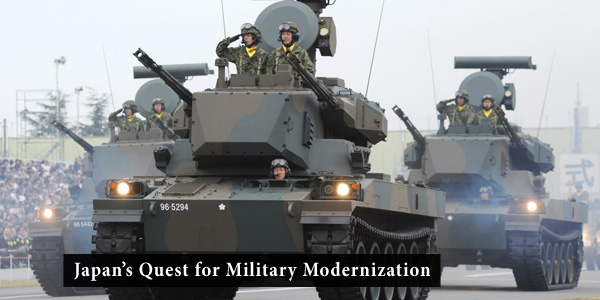China’s Ambitions at Sea and Naval Modernization
IRIA Staff - July 1, 2024

China’s Navy has been the world’s largest naval force for several years. In recent years, the Chinese government has rapidly modernized and diversified the country’s naval fleet and launched advanced guided-missile destroyers, amphibious assault ships, and aircraft carriers, revealing China’s longstanding blue-water ambitions. China’s People’s Liberation Army (PLA) and its navy, PLA Navy or PLAN, currently have between 370 to 400 total service units in its active naval inventory and continue to grow in size and capabilities.
From 2005 to 2022, China’s PLAN added as many as 135 ships to its inventory, while in the same period, the U.S. Navy added just two, according to a U.S. Congressional Research Service report and data from the annual Department of Defense (DoD) report. The newly added ships include a variety of vessels: ballistic missile submarines (SSB), nuclear-powered attack submarines (SSN), diesel attack submarines, aircraft carriers, cruisers, destroyers, frigates, corvettes, missile-armed coastal patrol craft, amphibious tank landing ships, amphibious transport dock ship, and amphibious medium landing ship.
Key Highlights
PLAN has an overall battle force of over 370 ships and submarines, including over 140 major surface combatants, according to the DoD’s annual 2023 report on military and security developments in China. The number of PLAN vessels is expected to increase to 395 ships by 2025 and 435 ships by 2030, according to the Pentagon’s report.
Chinese Navy currently has 426 total units in its active naval inventory, according to the World Directory of Modern Military Warships (WDMMW). This includes frontline commissioned vessels including aircraft carriers, submarines, destroyers, frigates, corvettes, mine warfare and offshore patrol vessels, and amphibious assault ships; however, it does now count smaller patrol vessels, survey and replenishment ships.
The Chinese Navy’s current inventory includes:
• Aircraft Carriers – 3
• Submarines – 72
• Destroyers – 49
• Frigates – 44
• Corvettes – 71
• Mine Warfare – 49
• Amphibious Assault Ships – 11
• Offshore Patrol Vessels – 127
The Chinese Navy’s five branches are the Submarine Force, Surface Force, Coastal Defense Force, Marine Corps, and Naval Air Force. The PLAN consists of three major fleets: the North Sea, the East Sea, and the South Sea.
China’s Naval Ambitions
In recent years, the Chinese Navy has made its presence felt regionally and globally, driven by the PLAN’s ambition to become a “world-class navy.” The scale and pace of China’s naval expansion serve as a key instrument in safeguarding the PRC’s regional interests, surrounded by regional naval powers, including Russia, Japan, and India, and the frequent presence of the U.S. Navy in nearby waters. China views a robust naval force as essential to counter potential challenges to its interests in the Asia-Pacific region from the United States and its allies.
China’s growing shipbuilding capability accelerated the rapid expansion of the PLAN and also facilitated China’s transition into a commercial shipbuilding superpower. In 2023, China retained its lead in the global shipbuilding market followed by South Korea and Japan, and this trend is expected to continue in 2024. The modernization and expansion of the shipyards have resulted in increased shipbuilding capacity and capability for different military projects, such as submarines, and surface combatants.
China’s leading state-owned shipbuilding companies, including China Shipbuilding Industry Corporation (CSIC) and China State Shipbuilding Corporation (CSSC), which merged in 2019 to form China Shipbuilding Group Corporation (also known as CSSC) dominate both commercial and military shipbuilding, producing three-quarters of China’s ships and all domestically built vessels for the Chinese navy. Changxing Island in Shanghai has transformed into a major shipbuilding hub, with the rapid expansion of its shipyard facilities, pivotal in constructing China’s advanced warships.
The size, capability, and capacity of China’s shipbuilding industry is considered a key challenge to the long-standing status of the United States as the leading military power in the Western Pacific by U.S. military officials and observers. Amid growing apprehensions from the U.S. and its regional allies regarding the expanding global presence of PLAN and its evolving naval mission capabilities, Chinese officials have consistently denied any intention of seeking expansion or spheres of influence beyond its borders. Instead, they have criticized the United States for maintaining an extensive network of approximately 800 military bases across over 70 countries and territories. Beijing accuses Washington of destabilizing global security and meddling in the internal affairs of other nations through these overseas installations.
Western observers often view the Chinese naval modernization effort as being aimed at developing capabilities to:
• Strengthen control over China’s maritime domains and near-seas region, especially in the South China Sea.
• Assert China’s right to conduct activities within its 200-mile maritime exclusive economic zone (EEZ).
• Safeguard China’s vital commercial sea routes (SLOCs).
• Actively respond to the situation in the event of a conflict in China’s near-seas region over Taiwan.
• Counterbalance U.S. influence in the Western Pacific region and strengthen China’s status as the leading regional and world power.
However, China has claimed that its naval expansion is not aimed at competition but at safeguarding national sovereignty, territorial integrity, and rights. Some of the other roles and missions include maritime security operations such as antipiracy operations, humanitarian assistance, disaster relief operations, and noncombatant evacuation operations.
China’s Naval Modernization Efforts
The Navy constitutes one aspect of China’s overall defense modernization endeavors. The Chinese military aims to upgrade its capabilities and improve its proficiencies across all warfare domains for an efficient joint force that can conduct the full range of land, air, and maritime as well as nuclear, space, electronic warfare, and cyberspace operations.
To achieve its goal of building a “strong and modernized navy force,” the PLAN has substituted or upgraded its previous generations of platforms with larger, modern multi-mission combatants. The naval modernization efforts began in the mid-1990s. Presently, the Chinese Navy primarily comprises state-of-the-art multi-role vessels equipped with sophisticated anti-ship, anti-aircraft, and anti-submarine weaponry and sensor systems. Aligning with the strategic imperative of safeguarding both near and far sea territories, the PLAN is accelerating its shift from near-sea defense to broader protection missions in distant waters. It is enhancing capabilities for strategic deterrence, counterattack, maritime maneuvering, joint operations, comprehensive defense, and integrated support, to build a robust and modernized naval force.
To Continue Reading, Download Full Report...
ALSO READ:
Regions
Issues


















 Japan's Quest for Military Modernization
Japan's Quest for Military Modernization Advanced Robotic and Autonomous Weapon Systems
Advanced Robotic and Autonomous Weapon Systems








